Ganges: The holy men fasting to death keep a river alive
- Published

Atmabodhanand, 26, stopped taking food on 24 October
Over the past two decades, holy men in India have gone on dozens of fasts demanding governments honour their promise to revive the polluted Ganges, a river revered by Hindus. The recent death of one of the most prominent hunger strikers made headlines. Soutik Biswas went to find out more.
In a quiet ashram (retreat) near the pilgrim town of Haridwar, a young seer says he would die to save the Ganges.
Atmabodhanand is on the 40th day of a fast begun after the ashram's most prominent resident starved himself to death two months ago.
The 26-year-old computer science dropout from Kerala state spends his days lying under a blanket on a bed beneath a mango tree. When night falls and the air gets chillier, he moves inside the spartan quarters and sleeps.
"I am ready to die," he told me. "Our ashram has a history of sacrifice."
Matri Sadan is a leafy, three-acre ashram that sits on the edge of the river. Atmabodhanand stopped taking food on 24 October and now survives on water, salt and honey - his is the 60th such fast by residents since it was founded in 1997.
Using a mix of folksy activism and hunger strikes, residents have put pressure on successive governments to scrap big dams, ban sand mining, clean up the river and pass laws to protect it. Many governments have acceded to their demands in the past.
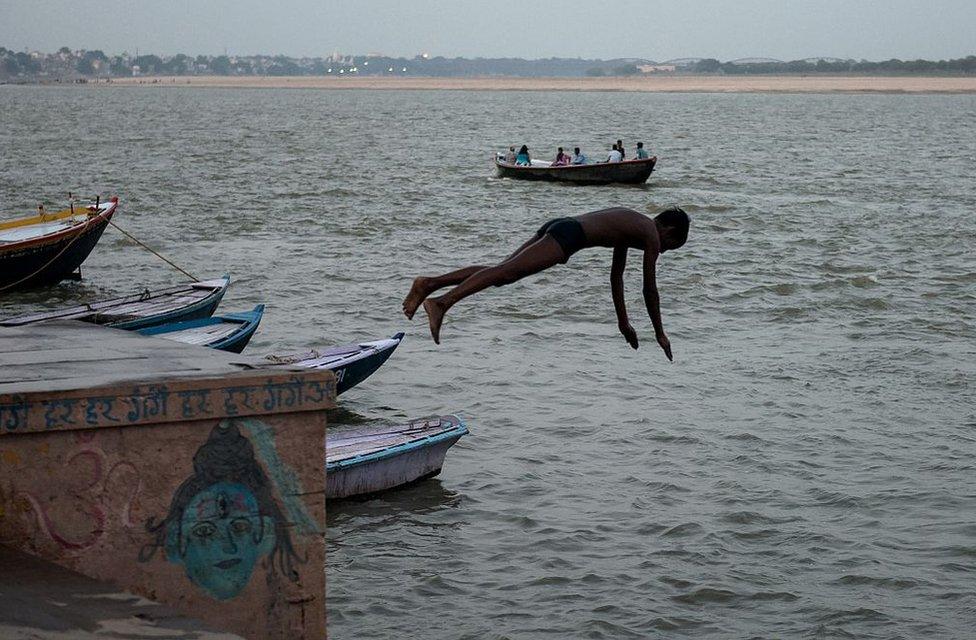
The Ganges is the longest river in India
Seven years ago Swami Nigamanand, 36, fell into a coma and died after refusing food for 115 days - the longest hunger strike in the ashram's history. He had demanded the government halt all stone quarrying near the river.
A 39-year-old local seer and ashram resident, Sant Gopal Das, is currently being force fed in hospital to keep him alive.
But it was the death in October of GD Agarwal, an 86-year-old former environmental engineer, that grabbed international headlines. Agarwal, also known as Swami Gyan Swaroop Sanand, died after fasting for 111 days at the ashram.
Agarwal was an alumnus of University of California, Berkeley, and taught at the elite Indian Institute of Technology. He worked as an engineer with the federal pollution control authority and was a vocal critic of the government's half-hearted efforts at cleaning up the river. In 2011, he renounced the material world and became a seer. Before his death he wrote three letters to Prime Minister Narendra Modi with his demands , external. He didn't receive an answer.
"He was an inspiration to us all to do the best, and be our best, in all that we do," Mary Stacey of the University of California wrote to the ashram after his death.
Two days after Agarwal began refusing water, his condition deteriorated and he died after being forcibly moved to the hospital. Within two weeks, Atmabodhanand took up the cudgels and began his hunger strike, inspired by his famous predecessor. He also believes that one man's hunger can "bring back the river from the dead".
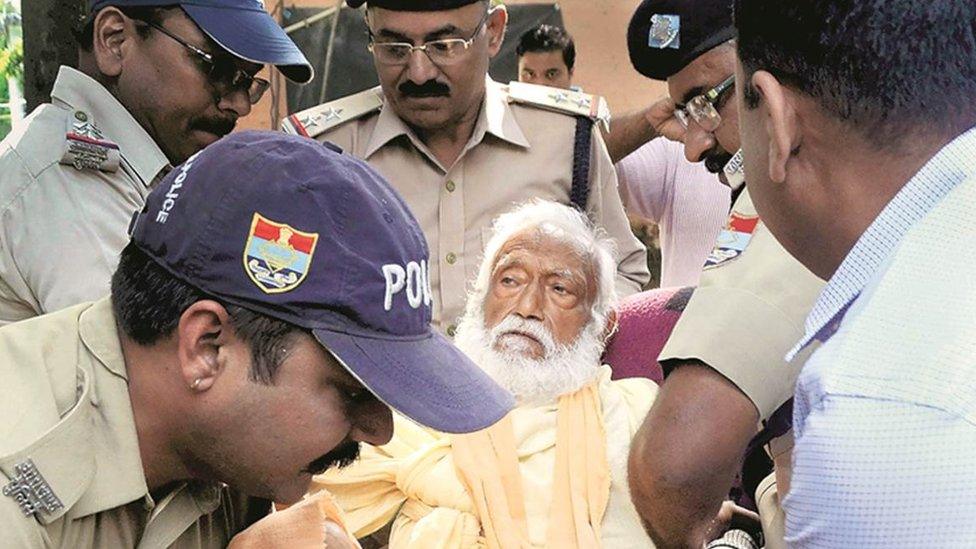
Environmentalist GD Agarwal died in October after a 111-day-long hunger strike
The longest Indian river, Ganges flows from the Himalayas to the Bay of Bengal. Concerns over the declining water levels and waning health of the 2,500km (1,553-mile)-long river, which supports a quarter of India's 1.3 billion people, have been mounting for years.
Hindus revere the river as a god, and believe that bathing in her waters can wash away a person's sins.
But the Ganges has been choked by more than 1,000 irrigation dams, the water table in its basin shrunk by reckless extraction of groundwater and its own water poisoned by toxic industrial effluent and household sewage. The river in Haridwar itself caught fire in 1984 when someone put a lit match on the water. "Indians are killing the Ganges with pollution and the polluted Ganges, in turn, is killing Indians," says Victor Mallet, author of River of Life, River of Death, a new book on the river.
Now, say the seers at the ashram, Narendra Modi's Hindu nationalist BJP government, which rode to power in 2014 promising to clean up the Ganges, is "arrogant and isn't interested in saving the river".
They find it ironical that despite Agarwal being close to a Hindu nationalist organisation, he actually appeared to be listened to more by the previous Congress government. He fasted eight times while it was in power, and extracted some major concessions, including scrapping a dam and declaring a key 100km stretch of the river as sensitive.
"We will die for the river. If the government wants blood, we will give them blood," says Swami Shivanand, the 72-year-old head of the ashram, who has also fasted in the past.
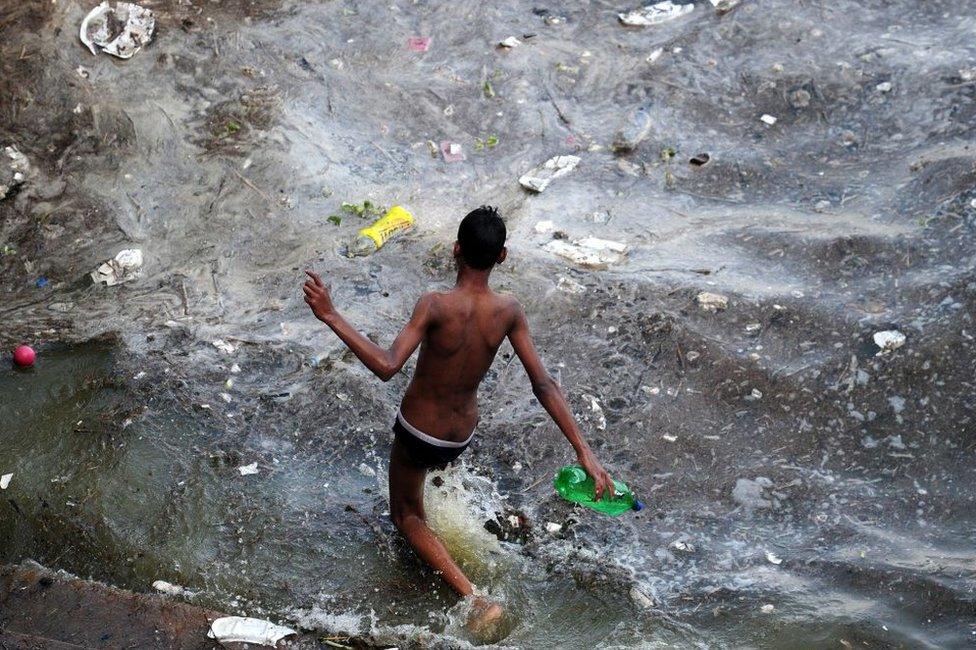
The Ganges is one of the world's most polluted rivers
Five years ago, Atmabodhanand quit college and travelled from Kerala in the south to Haridwar in northern Uttarakhand state by train, bus and foot. Seeking a life of renunciation, he says he was disillusioned by the way most holy men lived, and decided to end his life by disappearing into the Himalayas.
That is when he met Swami Shivanand who took him in. At the ashram he immersed himself in prayers and other activities and ran its social media accounts.
Atmabodhanand has gone on eight hunger strikes since 2014. During his longest fast, which lasted 47 days, he had hypothermia - when the body loses heat faster than it can produce it - and had to be taken to hospital. He has protested against sand mining on the river and stone crushing on its banks, and ended his strikes, he says, after authorities listened to the demands and took steps.
"This time, it is a fight to the finish. It's going to be a long haul," he says.
On the day I visited the ashram, rattled authorities, panicky at the prospect of another hunger death on the premises, sent doctors with an ambulance to check Atmabodhanand and take blood and urine samples to test for blood sugar, malaria and dengue. His blood pressure was normal, and he had no fever.
They updated his medical records in a government log book called Medical Examination of Hunger Strikers. All this while, residents chided the officials and accused them of trying to take away the hunger striker to "poison" him in hospital. The officials wondered aloud what they would gain by "killing a hunger striker".
Hunger as a form of political protest is not new to India - Gandhi is arguably the most famous hunger striker in history, having resorted to more than a dozen fasts, the longest one lasting 21 days.
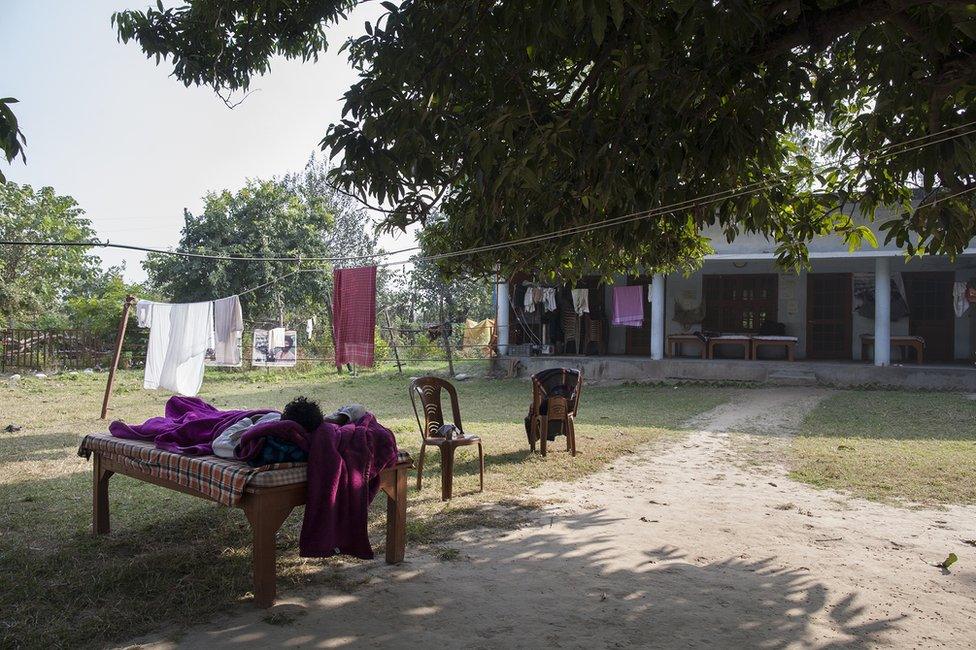
Atmabodhanand lies on a bed under a tree in the ashram during the day
Much later, in 2011, anti-corruption campaigner Anna Hazare undertook a high-profile 12-day hunger strike to press for anti-corruption laws. But what makes the fasts at the ashram in Haridwar stand out are their frequency and the two deaths. "Hunger strikers believe that the voice of hunger has a power disproportionate to its source," says Prof Sharman Apt Russell, author of Hunger: An Unnatural History. "Hunger can strengthen the weak, inspire the timid, bully the powerful."
But the lack of widespread public support for the fasting residents of Matri Sadan is sometimes glaring. "People have become selfish. They don't care about their own good any more," says Atmabodhanand feebly.
But the reality is possibly more complex.
Himanshu Thakkar, a water expert with the advocacy group South Asian Network on Dams, says the hunger strikes by the seers at Matri Sadan have had "some impact" all right. Sand mining on the river has been stopped from time to time, and stone crushing factories removed from near the river. "But my impression is fasting must be a part of a larger strategy in which people from different sections of society must be mobilised."
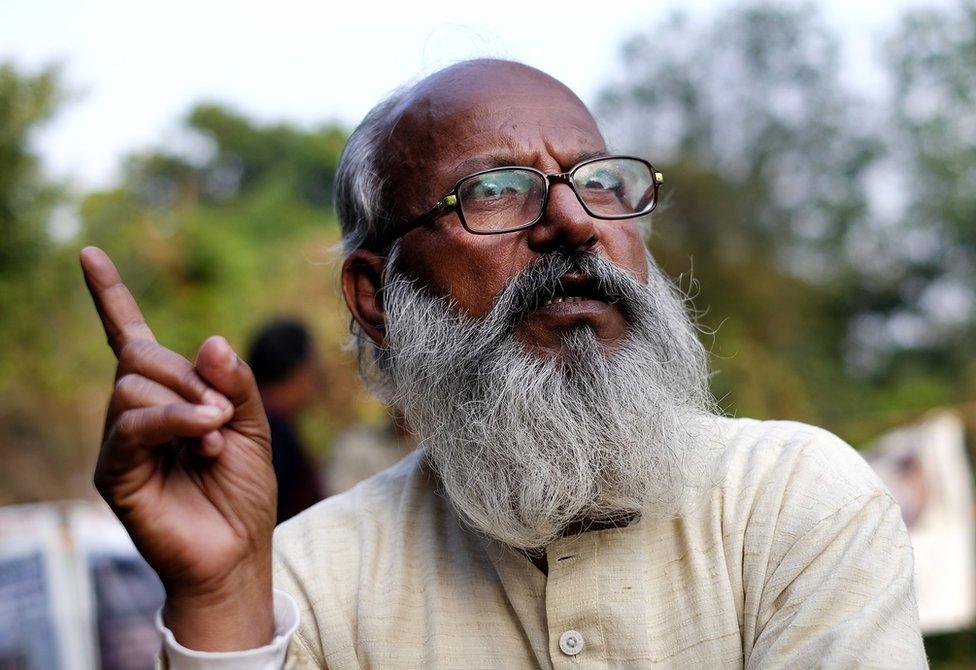
Swami Punyanand is on a fruits only diet to prepare for a future hunger strike
The BJP's water resources minister Nitin Gadkari says a $3bn plan involving 254 projects to clean up the river and its surroundings is in progress, and most of the cleaning work of the river will be completed by next year. "The people's dream of a rejuvenated Ganges will soon be fulfilled," he told a meeting in Delhi recently.
But the seers insist the government is not doing enough. So hunger remains a constant companion of the residents at the retreat.
"I am next in the queue. This time, we will not stop," says Swami Punyanand, a 61-year-old former automobile workshop owner from Delhi who became a seer years ago. He has gone on a simple fruit diet to "prepare for fasting to death".
In the hermitage of hunger, this is how they prepare to give up their lives for the river.